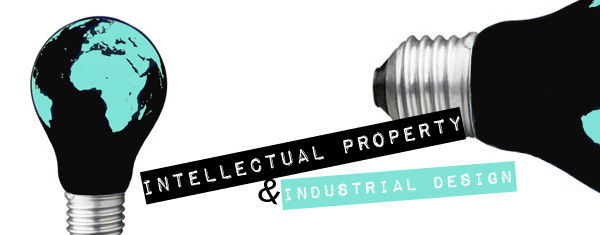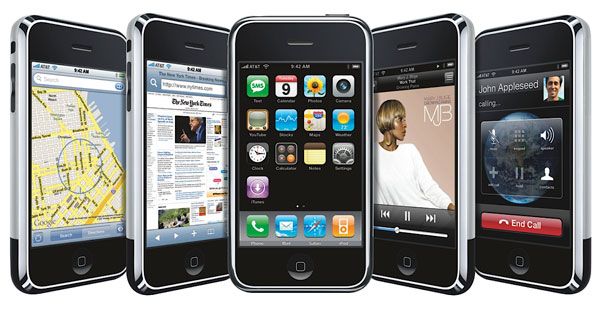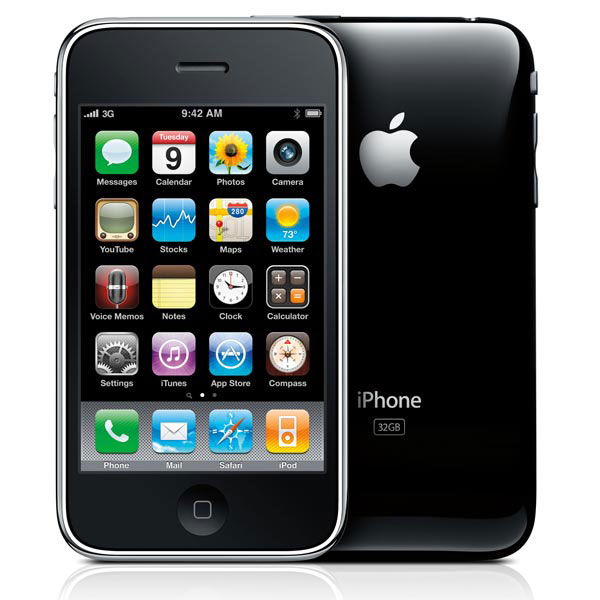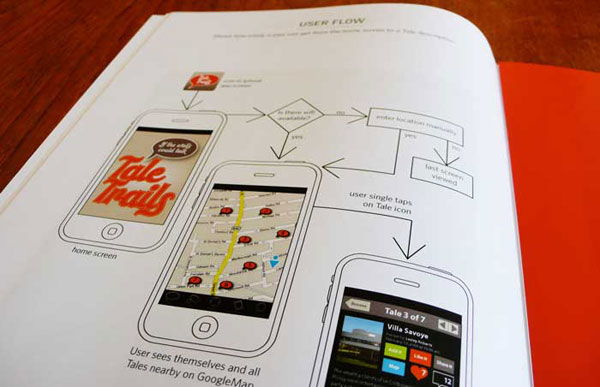Intellectual Property and Industrial Design – Part 1

- Apple
- Apple Iphone
- Australia
- copyright law
- Coverflow
- design registrations
- development
- Embody 3D
- Europe
- idea
- idea/product
- industrial design
- intellectual property article
- Iphone
- managing intellectual property
- Martin Gibson
- New York
- patent
- Patents
- protection
- supermarket chain
- United Kingdom
- United States
- USD
- Woolworths

When it comes to intellectual property everyone seems to have their own opinion of how it all works. Industrial design as a profession plays a crucial role in the development and maintenance of patents and it is in your financial interest and in the justice of being recognised for your works to have a solid understanding of intellectual property. In this two part article I will explain the different types of protection available in the development of products and the requirement criteria for each protection type. I will then touch briefly on international product development and patent writing tips. But most importantly at the end I will go over business strategies and the worthwhileness of patents. One must keep in mind that this article makes reference to IP laws in the United Kingdom and Australia, which is similar to most western countries like mainland Europe and the USA. But each country may have slight differences when it comes to managing intellectual property.
Article by Martin Gibson – Twitter – 14.01.2010
What is IP?
Firstly what is intellectual property? Intellectual property is thoughts and ideas, and in reference to patents, ideas with a commercial value. I must emphasise that intellectual property has no tangible value or worth, it is purely an idea. Consequently, unless steps are made to commercialise an idea it is really worthless from a monetary perspective. I have heard many people say that patents are like a lottery ticket, only one or two of them every go anywhere. This is very true as there are many great ideas in this world but without the appropriate expertise to nurture these ideas they will never get off the ground.
Types of Protection
There are 5 types of protection available to industrial designers to protect certain aspects of a product including: Patents, Innovation Patents, Design Registrations, Trademarks and Copyright. Below I am going to use the classic Apple Iphone as a product example and explain how these protections apply.
Patents

Patents are the main form of invention protection of a product and provides the inventor exclusive rights to exploit a concept. Patents can be granted to an idea/product that is totally new and is ‘commercially useful’. The Iphone’s multi-touch is a good example of a totally new type of interaction ritual with a device including swipe gestures and pinch to zoom. A patent can last up to 20 years before others have the right to reproduce the work. Patents are relatively expensive, and for small firms the price tag might be a bit of a turn-off. The lodging and application of a patent will total $1060, as well as an annual renewal fee starting at $250 a year which will go up to to $900 a year by the time you have reached your 20th year.
However for smaller businesses or if you are unsure whether your patent is commercially viable there is a provisional patent which only costs $80 and lasts a year. This provisional patent basically gives you a year of protection to explore commercial opportunities whilst still having protection. Just recently introduced in Australia is a 12 month grace period which allows inventors to still be able to apply for a patent despite accidental disclosure, public exhibition or disclosure without a confidentiality agreement. This grace period only lasts a year so if you disclose information accidentally you should immediately apply for a provisional patent. It is also imperative that you document your drawings and concepts with dates and make many copies and keep them somewhere safe. These documents may be critical in proving that you are in fact the original inventor of the product.
Innovation Patents

Innovation patents are a great way to protect more incremental steps of innovation that are not full blown inventions. For example the Iphone’s ‘Coverflow’ allows the user to browse music by displaying a swipe-based carrousel featuring the album art in a library. This type of innovation could not be considered inventive but more an incremental step in a way of listing media. Innovation patents give the inventor 8 years of protection and it costs $700 for the original application and then $100 a year which goes up to $230 by the time you have reached the 8th year. Innovation patents may be cheaper but they also don’t give you as much protection. In fact, even when you have been granted an innovation patent it hasn’t even been verified across the patent database as being new or novel. Therefore it may be difficult to sell or license an innovation until the patent has been fully examined and certified. This limited protection is also not suitable for protecting your product in overseas export markets.
Design Registrations

Design Registrations protect the look and feel of your product. This is particularly useful if your product relies on its look – for example a watch or sunglasses. If we look at the Iphone it is filled with Design Registrations. Some of which include the dimpled home button, the chrome-like fillet around the perimeter of the product and of course the iconography of some of the applications. For a Design Registration to be granted the product must be distinctive by colour, shape, configuration or pattern. Design registrations last up to 15 years and costs $560 for the application and an annual renewal fee of $55 a year going up to $135 by the final year.
Trademarks

Trademarks are one of the most important parts of product protection, particularly for a business unit as a whole. Trademarks are a symbol, name or identity of a brand that characterises the business and its products and services. It is basically to stop other businesses stealing the success of your brand and using it on their products. The Apple logo clearly visible on the back of the Iphone doesn’t just aesthetically stylise the product but more importantly signifies that this product design belongs to Apple. It prevents other manufacturers from putting an Apple logo on their phone or calling it an Iphone. Apple is very attentive about competitors using Apple’s brand to build a rapport with new customers. For example the large Australian supermarket chain Woolworths, designed a new apple shaped logo (which by the way aesthetically couldn’t be more different from the actual Apple logo) but it came under close scrutiny by Apple for stealing the essence of its logo trademark. Some businesses like to put TM, C or R symbols next to their logos or other branded material to state their intent that they have pursued legal protection. Just to clarify, the TM symbol doesn’t mean a product is trademarked, in fact it means the opposite. The TM symbol only means that a business is using a logo as if it were a trademark and in the future has the intent of applying for a trademark. The R symbol means the business has a registered trademark and has full ownership of their brands image and corporate identity. Having a unique name or image will work in your favour when applying for a trademark. It is difficult to trademark a geographic name e.g. New York, a general service e.g. plumbing, or a common surname e.g. Smith. But these types of identifiers when used together might make a valid trademark e.g. Smith’s Plumbing New York.
Trademarks can theoretically last forever but as we know no business can last forever. It costs a one off fee of $490 to make an application.
Copyright

People often get confused about general copyright law. In fact copyright is the most beautiful protection of all and its free despite a common myth that copyright must be applied and paid for. Whenever you perform any design work whether it be a product or graphic, it is copyrighted automatically (but this is of course not kept in a register of sorts). General copyright infringement laws prevent people making complete duplications of your designs. For example the above Apple Iphone instruction manual has automatic copyright protection on the wording and diagram information. This type of protection prevents competitors making ‘copy-cat’ products, but also prevents third parties from illegally re-selling your products under a different name. It is imperative if you want this type of protection that you document your original designs by signing your name on them, applying a date of when it was generated and supplying contact information. Otherwise it will be extremely difficult to prove you originally designed the work. Just think about how the internet has destroyed and violated millions of copyright holders because authors were careless in labelling their work.

9 Comments
so are innovation patents basically a waste of time then?
[…] This post was mentioned on Twitter by Martin Gibson, Martin Gibson. Martin Gibson said: New Blog Posting, Intellectual Property and Industrial Design – Part 1 – http://bit.ly/4IoH4f […]
Are you sure that you don’t have to register something to get copyrighted. I have this friend who pays this company that properly copyrights stuff..
I think for most businesses trademarks are a bit of a waste of time. If you have your business registered that should be enough protection.
@Henry Innovation patents aren’t a complete waste of time. They do give you some protection it is basically a patent that hasn’t been verified yet, and protects work that is unique but not groundbreaking. Thanks for commenting!
@Brett Yeah there is no such thing as getting something copyrighted. However there are things you can do to help enforce your intent to prosecute those who steal your work. For example putting a copyright symbol, stating when it was made and who made it may help give identity to the work, but this doesn’t actually physically copyright the work, this is automatic. Thanks for the comment!
Thanks so much this article is good. I am not a designer myself but I found it interesting all the same.
lovn tha site!
We don’t have innovation patents in Ireland but I think they have a valid need as most innovation isn’t revolutionary. But what we do here is we lower the entry standard of normal patents. But the good thing about your system is that really good innovations get more protection and not as good ones get not as much which is more fair.